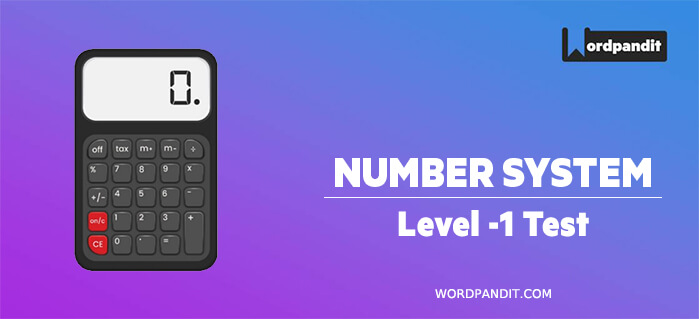- This is an assessment test.
- To draw maximum benefit, study the concepts for the topic concerned.
- Kindly take the tests in this series with a pre-defined schedule.
Number System: Level 1 Test - 6
Congratulations - you have completed Number System: Level 1 Test - 6.You scored %%SCORE%% out of %%TOTAL%%.You correct answer percentage: %%PERCENTAGE%% .Your performance has been rated as %%RATING%%
Your answers are highlighted below.
Question 1 |
The number of two-digit numbers exactly divisible 3 is
33 | |
32 | |
31 | |
30 |
Question 1 Explanation:
Required numbers are 12, 15, 18, ………. , 99
This is an AP with a = 12 and d = 3
Tn= a + (n - 1) d
99 = 12+ (n -1) x 3
n -1 = 99 -12 /3
n = 29 + 1 = 30
This is an AP with a = 12 and d = 3
Tn= a + (n - 1) d
99 = 12+ (n -1) x 3
n -1 = 99 -12 /3
n = 29 + 1 = 30
Question 2 |
The number which when increased by 20 is equal to six times of the old number. Find the old number?
7 | |
5 | |
3 | |
4 |
Question 2 Explanation:
Let the whole number be x.
x =1/6 (x + 20)
6x=x+ 20
5x=20 and x =4
x =1/6 (x + 20)
6x=x+ 20
5x=20 and x =4
Question 3 |
A number when divided by 765 leaves a remainder 42. Find the remainder if the same number is divided by 17?
8 | |
5 | |
7 | |
6 |
Question 3 Explanation:
Let the number be (765x + 42).
When this number is divided by 17,
then quotient will be (45x + 2) and remainder will be 8.
When this number is divided by 17,
then quotient will be (45x + 2) and remainder will be 8.
Question 4 |
A company manufactured 6000 scooters in the third year of after establishment and 7000 scooters in the seventh year. Assuming that the production increases uniformly by in the given years , Find the production of the company in the tenth year?
7850 | |
7650 | |
7750 | |
7950 |
Question 4 Explanation:
Production in third year =6000
Production in seventh year =7000
Production in fourth year = 1000 ie,
Production increases @ 250 scooters every year.
Production in tenth year = (7000 + 250 x 3) = 7750
Production in seventh year =7000
Production in fourth year = 1000 ie,
Production increases @ 250 scooters every year.
Production in tenth year = (7000 + 250 x 3) = 7750
Question 5 |
The digits of a three-digit number A are written in the reverse order to form another three-digit number B. If B > A and B-A is perfectly divisible by 7, then which of the following is necessarily true?
100 < A < 299 | |
106 < A < 305 | |
112 < A < 311 | |
118< A < 317 |
Question 5 Explanation:
Let A = abc, then B = cba
Given, B > A which implies c > a ...(1)
As B – A = (100c + 10b + a) – (100a + 10b + 1)
B – A = 100 (c – a) + (a – c)
B – A = 99 (c – a) and (B – A) is divisible by 7;
As 99 is not divisible by 7 (no factor like 7 or 7^2)
Therefore (c – a) must be divisible by 7 {i.e., (c – a)
Must be 7, 7^2 etc.} as c & a are single digits. (c – a)
Must be 7 only, the possible values (c, a) {with c > a}
Are (9, 2) & (8, 1), with this we can write A as A : abc ≡ 1b8 or 2b9
As b can take values from 0 to 9, the smallest & largest possible value of are:
A min = 108 & A max = 299
only option b satisfies the given condition, so (b) is the ans
Given, B > A which implies c > a ...(1)
As B – A = (100c + 10b + a) – (100a + 10b + 1)
B – A = 100 (c – a) + (a – c)
B – A = 99 (c – a) and (B – A) is divisible by 7;
As 99 is not divisible by 7 (no factor like 7 or 7^2)
Therefore (c – a) must be divisible by 7 {i.e., (c – a)
Must be 7, 7^2 etc.} as c & a are single digits. (c – a)
Must be 7 only, the possible values (c, a) {with c > a}
Are (9, 2) & (8, 1), with this we can write A as A : abc ≡ 1b8 or 2b9
As b can take values from 0 to 9, the smallest & largest possible value of are:
A min = 108 & A max = 299
only option b satisfies the given condition, so (b) is the ans
Once you are finished, click the button below. Any items you have not completed will be marked incorrect.
There are 5 questions to complete.
List |











